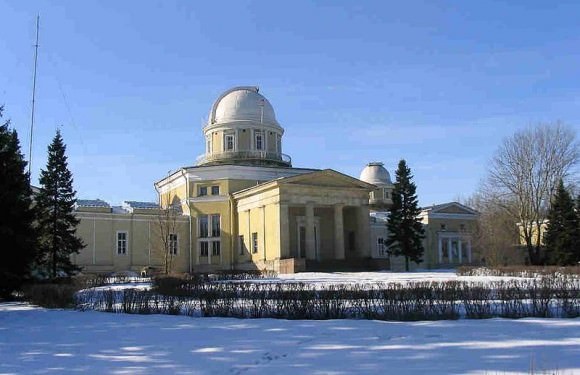[/caption]
Located just south of Saint Petersburg on Pulkovo Heights, one of the greatest Russian Observatories of all times – the Pulkovo Observatory – is about to embark on a very noble study. According to the head of the Institute for Space Research, Lev Zelyony, the Soviet telescopes are about to turn their eyes towards deep skies in search of extrasolar planets. “Scientists from the Pulkovo Observatory are planning to use ground-based instruments to study the transit of planets around their parent stars,” Zelyony said at a roundtable meeting at RIA Novosti headquarters in Moscow.
The observatory was absolutely state-of-the-art when it opened for business in 1839 and employed Wilhelm von Struve as its director. It houses some of the largest refractor telescopes in the world, including a 38-cm (15 in.) aperture refractor and a 30-inch (76 cm) refractor – both built by Alvan Clarke and Sons. Fifty years later, they added an astrophysical laboratory, a mechanical workshop and installed one of Europe’s largest lensed telescope, a 76-cm refractor (30 inch). Later additions to the observatory included a Littrow spectrograph and horizontal solar telescope and the facility blossomed into a world leader in stellar spectroscopy, cataloging and more. Modern improvements include astrograph equipment, an interferometer, radio telescope and even an additional 65-cm (26-inch) refractor. The Pulkovo Observatory is up to the task.

The hunt for exoplanets is one of the most popular aspects of modern astronomy and one of the fastest growing fields. In less than 25 years, 755 and an ever-increasing number of planets have been cataloged… and the research just doesn’t end. The United States Kepler Mission and French CoRoT space telescope have had their share of fun, but using a ground-based telescope could also be a viable source of planet detection, Zelyony said. He also cited the example of the Hungarian Automated Telescope Network (HATNet) which so far has discovered 29 exoplanets. By using the transit detection method, the Russian astronomers are eager to begin observations where a small change in magnitude could mean a big change in the way their telescopes perceive the stars.
“It is an interesting research, which should be pursued,” Zelyony said. “It will also help us look at our Solar System from a different perspective.”
Original Story Source: Rionovosti News Release.

